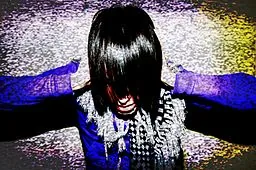Home Concussion Test
Every parent hopes that their child will remain safe from all harm, but kids by their very nature are accident-prone – and sometimes, you might begin to fear that your child has received a concussion, whether this is through play or a serious accident.
What Is A Concussion?
A concussion is a mild brain injury resulting from a blow to the head, and there are numerous ways in which this can occur. Kids might hurt themselves while playing with their friends; get injured during a game of football or basketball; slip and fall hitting their head on a hard surface; or they may even be involved in a pedestrian accident, car accident or bicycle accident.
How Do I Know if my Child Suffered a Concussion?
In all of these scenarios you might begin to fear that your child received a blow to the head strong enough to knock them unconscious and perhaps even cause a concussion – but before you pull them out of school and call a hospital, you should learn how to conduct a home concussion test and personally gauge their level of injury. You may also want to know if something is up, if you suspect your child had a head injury, but are not aware of all the details.
What Is A Home Concussion Test?
There is one simple test you can conduct that will help you to determine this – the King-Devick test, which was originally developed in the 1960s to diagnose dyslexia but has since been adapted to detect concussions in children as young as five years of age. A study by New York University’s Langone Concussion Center found that this test can determine when athletes have suffered a concussion, possibly even better than other tests.
How Do I Perform The Home Test?
You need only two materials to conduct the test, which is meant to gauge how an injury has affected the brain by having children engage in cognitive processes that might be impacted by a concussion. Take out a stopwatch and a few pieces of paper, and have your child read three different series of numbers off of three different pieces of paper, moving from left to right and going as fast as they can. They should be timed for each series, and you can add the times together to create a total score.
Prepare a Previous Test In Advance
This score should then be compared to a time that the child got at some earlier point, before the injury that resulted in the concussion. If the new score is more than a few seconds higher than the old one, you should begin to suspect your child may have a concussion, and act accordingly. That’s because the test mostly assesses eyesight, which is an indicator of the overall health of your brain. If your child has received a concussion, he or she will experience other symptoms such as blurred vision and blackouts that also show how sight connects to your brain’s wellness.
Related Articles by Ed Smith:
- Traumatic Brain Injury in Children
- What is a Traumatic Brain Injury?
- Concussions in Children
- Symptoms of a Brain Injury?
- Tips in Handling Childrens Brain Injuries
Sacramento Concussion & Brain Injury Lawyers
I’m Ed Smith, a Sacramento Brain Injury Lawyer. If you or your family member has suffered a concussion injury due to the negligence of another, please call me at at (916) 921-6400, or toll free at (800) 404-5400 for free, friendly advice. If you prefer, contact me online to receive a FREE, no obligation appointment.
I’m proud to be a California Million Dollar Advocate. This is an association of top rated trial lawyers in the United States who have obtained multiple million dollar case verdicts and settlements for their clients.
See my outstanding history of Past Verdicts & Settlements here.
Take a few minutes to look me up on the popular ranking sites: Google, Yelp and Avvo.
I am the founder of California’s leading personal injury website: www.autoaccident.com.
Image Attribution: Wikimedia Commons
Source of Home Concussion Test – Learn more about the King-Devick test here: https://kingdevicktest.com/
:bass/bw

